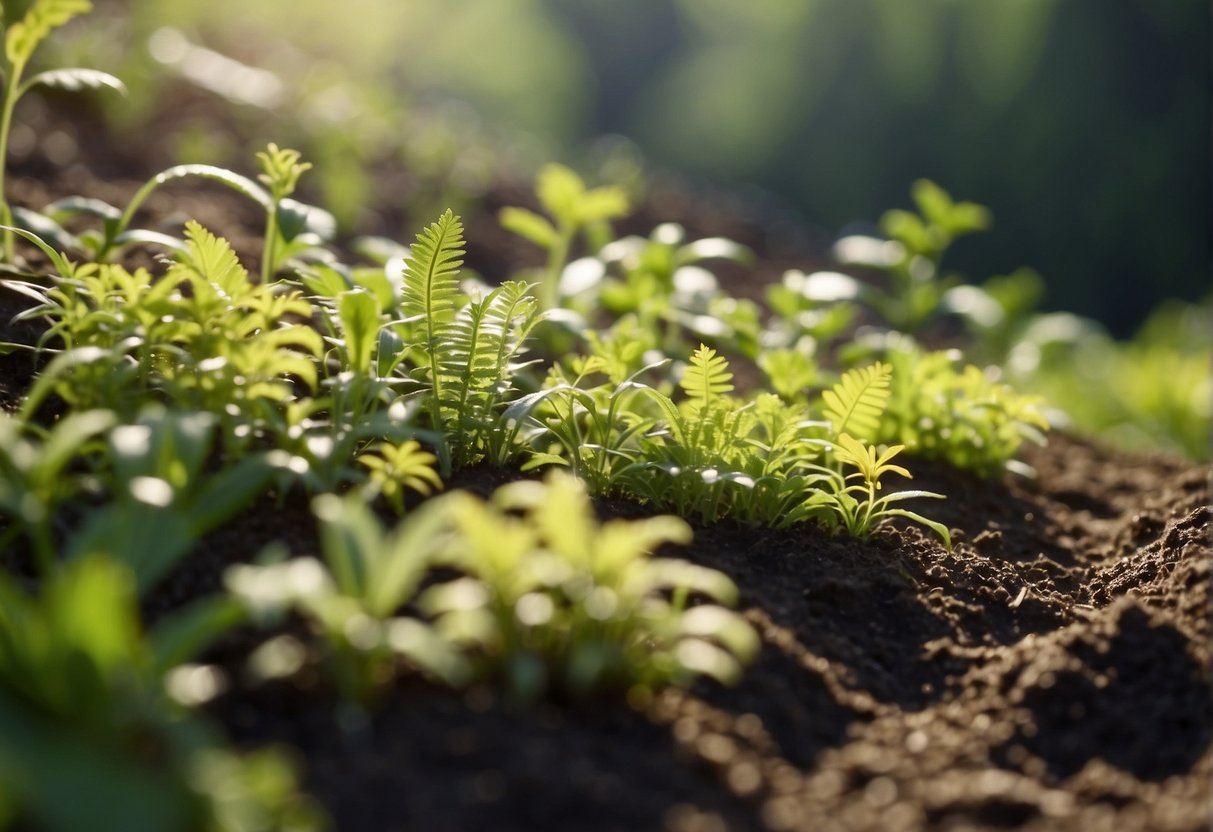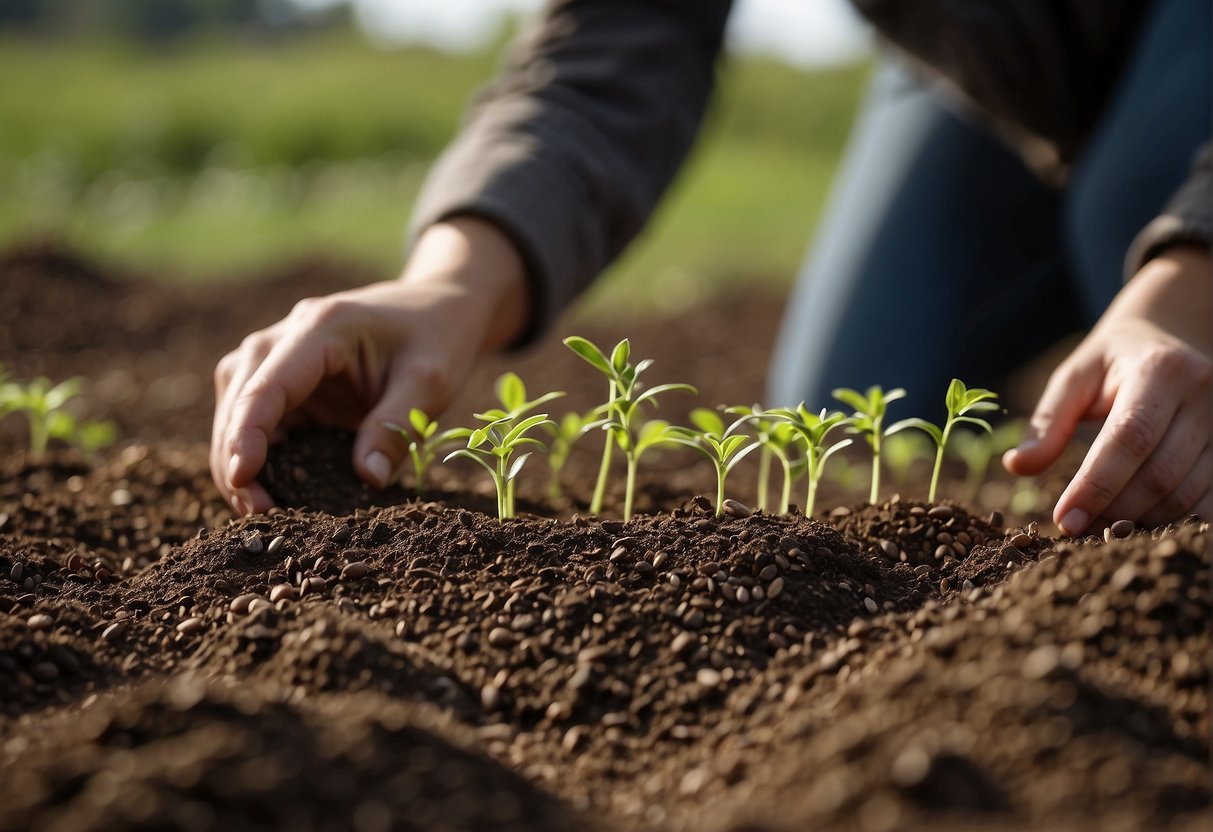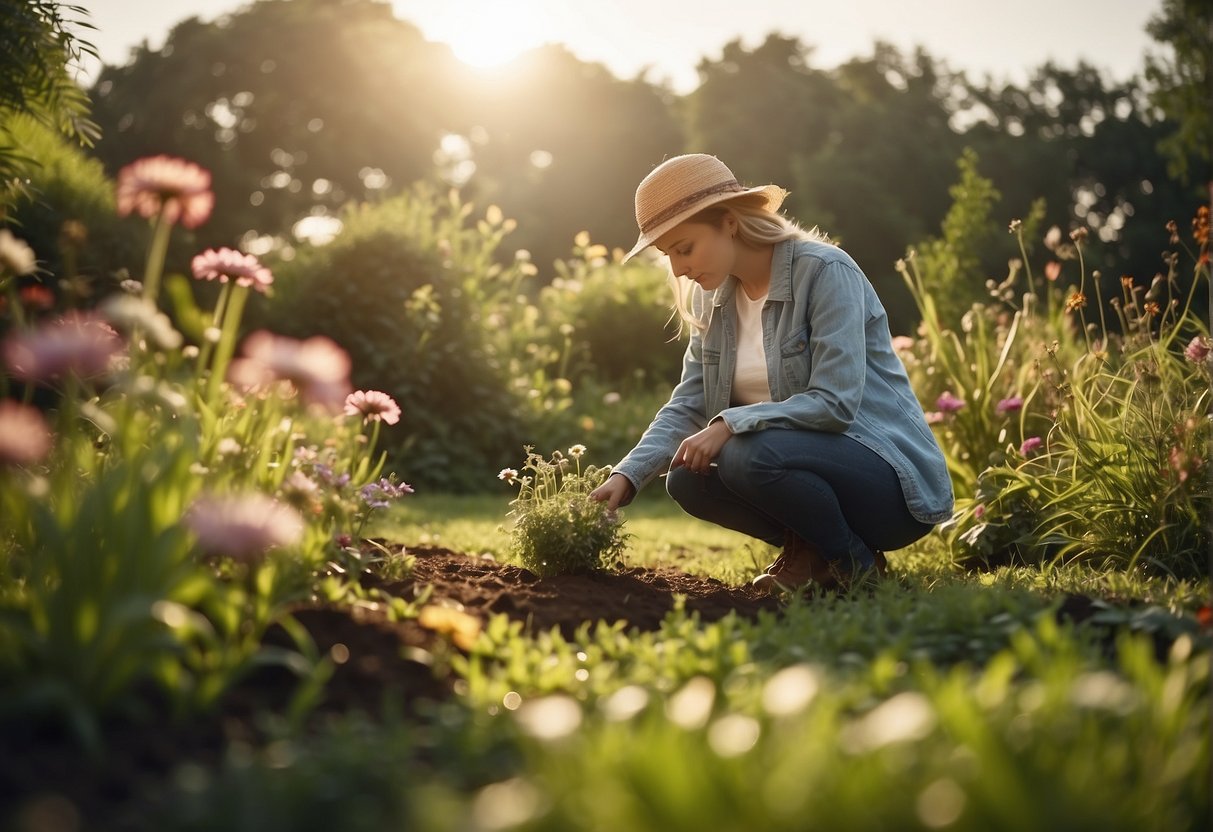Planting on a Bank: Tips and Techniques for Successful Slope Gardening
Planting on a bank can be a challenging task, but with the right techniques and tools, it can be done successfully. A bank is an inclined area of land, which makes it difficult to plant and maintain vegetation. The angle of the slope can cause soil erosion, water runoff, and other problems that can harm the plants. However, planting on a bank can also have many benefits, such as preventing soil erosion, improving water quality, and adding aesthetic value to the area.

Before planting on a bank, it is important to assess the site’s conditions, such as the soil type, sun exposure, and drainage. The soil on a bank is usually loose and prone to erosion, so it is essential to choose plants that have deep roots and can hold the soil in place. Plants that are adapted to the local climate and soil conditions will also have a better chance of survival. Proper drainage is another important factor to consider when planting on a bank, as excess water can cause the soil to become waterlogged and damage the plants.
Once the site has been assessed, the next step is to prepare the soil and choose the right plants. Techniques such as terracing, mulching, and using erosion control blankets can help prevent soil erosion and provide a stable environment for the plants to grow. Choosing plants that are low maintenance and can tolerate the site’s conditions will also make the planting process easier and more successful. With the right preparation and care, planting on a bank can be a rewarding and sustainable way to enhance the natural beauty of an area.
Planning and Design
Assessing the Bank
Before starting the planting process, it is important to assess the bank to determine the best approach. Factors such as the slope, soil type, and exposure to sunlight should be considered. A steep slope may require the use of retaining walls or terracing to prevent erosion, while a shallow slope may only need plants with strong root systems to hold the soil in place. The soil type will also affect the selection of plants, as some plants thrive in sandy soil while others prefer clay. Finally, the amount of sunlight the bank receives will determine which plants will grow best in that particular environment.
Choosing the Right Plants
Selecting the right plants for a bank is crucial to ensure that they can thrive in the given environment. Plants with deep roots are ideal for stabilizing the soil and preventing erosion. Native plants are also a good choice as they are adapted to the local climate and require less maintenance. When selecting plants, it is important to consider the zone and exposure of the bank. For example, a bank in a shady area may require shade-loving plants, while a bank in a sunny area may require plants that can tolerate full sun.
Garden Design Ideas
In addition to stabilizing the soil, planting on a bank can also enhance the landscape and add visual interest. Incorporating a variety of plants with different textures and colors can create a beautiful and dynamic garden. A mixture of groundcovers, shrubs, and trees can provide different layers and create a natural look. When designing a bank garden, it is important to consider the overall environment and choose plants that will complement the surrounding landscape.
Overall, careful planning and design are key to successfully planting on a bank. By assessing the bank, choosing the right plants, and incorporating garden design ideas, a functional and beautiful bank garden can be created.
Soil Preparation and Erosion Control
Improving Soil Quality
Before planting on a bank, it’s important to ensure that the soil is of good quality. This can be achieved through various methods. One of the most effective ways is to add organic matter, such as compost, to the soil. Organic matter helps to improve soil structure, water holding capacity, and nutrient availability. It also helps to promote the growth of beneficial microorganisms in the soil.
Another way to improve soil quality is to add fertilizers. However, it’s important to use fertilizers in moderation, as excessive use can lead to nutrient runoff and water pollution. It’s recommended to conduct a soil test to determine the specific nutrient needs of the soil.
Erosion Control Techniques
Planting on a bank can be challenging due to the risk of erosion. Erosion can be caused by various factors, such as wind, rain, and human activity. To prevent erosion, it’s important to implement erosion control techniques.
One effective technique is to plant ground cover plants, such as grasses and shrubs. These plants help to stabilize the soil and prevent erosion. Terracing and retaining walls are also effective techniques for preventing erosion, especially on steep slopes.
To ensure sustainability, it’s important to use erosion control techniques that have minimal impact on the environment. For example, using natural materials, such as rocks and logs, for retaining walls is more sustainable than using concrete.
In addition to erosion control techniques, it’s important to preserve the topsoil. Topsoil is the most fertile layer of the soil and contains the majority of the nutrients required for plant growth. To preserve topsoil, it’s recommended to avoid disturbing the soil as much as possible during planting. This can be achieved by using techniques such as no-till planting and mulching.
By improving soil quality and implementing effective erosion control techniques, planting on a bank can be a successful and sustainable endeavor.
Plant Selection

When selecting plants for a bank, it is important to consider factors such as stability, erosion control, and aesthetics. Here are some options to consider:
Deep-Rooted Plants for Stability
Plants with deep roots can help stabilize the soil on a bank. Trees such as oak, maple, and pine are good options for larger banks, while shrubs like juniper and yew can work well on smaller banks. Ornamental grasses like switchgrass and big bluestem can also help with stability.
Groundcovers for Erosion Control
Groundcovers are an excellent option for erosion control on banks. Vinca minor, pachysandra, and ivy are all popular choices that can help prevent soil erosion. These plants also add a nice touch of green to the bank.
Ornamental Plants for Aesthetics
Adding ornamental plants to a bank can enhance its visual appeal. Flowers such as petunias, marigolds, and daisies can add pops of color, while succulents like sedum and hens-and-chicks can add interesting textures. Ornamental grasses like feather reed grass and blue fescue can also provide a unique look to the bank.
Overall, selecting the right plants for a bank is crucial for its stability, erosion control, and aesthetics. By considering factors such as root depth and visual appeal, one can create a beautiful and functional bank.
Planting Techniques

When it comes to planting on a bank, there are a few techniques that can be used to ensure success. The two main techniques are terracing and retaining walls, and steps and slopes.
Terracing and Retaining Walls
Terracing involves creating flat areas on a slope by cutting into the hillside and building retaining walls to hold the soil in place. This technique is useful for steep slopes and can help prevent erosion. It also allows for better moisture retention, as the flat areas can hold water better than a steep slope.
Retaining walls can be made from a variety of materials, including concrete blocks, stone, or wood. It’s important to choose a material that is appropriate for the slope’s grade and the weight of the soil that will be held back. Low-growing plants can be used to soften the look of the retaining wall and provide additional erosion control.
Steps and Slopes
Steps can be used to create a gradual slope that is easier to navigate. They can be made from a variety of materials, including stone, wood, or concrete. It’s important to ensure that steps are built to the appropriate grade and are spaced evenly to prevent tripping hazards.
Slopes can be planted with low-growing plants that are able to withstand the slope’s grade. These plants can help prevent erosion and provide additional moisture retention. It’s important to choose plants that are appropriate for the slope’s sun exposure and soil type.
Overall, planting on a bank requires careful consideration of the slope’s grade and the appropriate planting techniques. By using terracing and retaining walls or steps and slopes, it’s possible to create a beautiful and functional landscape that is able to withstand erosion and retain moisture.
Maintenance and Care

Watering and Fertilization
Proper watering and fertilization are crucial for the health and growth of plants on a bank. It is important to water the plants regularly, especially during the dry season, to ensure that they receive enough moisture. However, overwatering can cause runoff and erosion, so it is important to find the right balance. Mulching can help retain moisture and reduce the need for frequent watering.
Fertilization is also important to provide the necessary nutrients for plant growth. Slow-release fertilizers are recommended as they provide a steady supply of nutrients over time. It is important to follow the instructions on the fertilizer package and not to over-fertilize, as this can lead to environmental problems such as nutrient runoff.
Pruning and Weed Control
Regular pruning and weed control are essential for maintaining the health and appearance of plants on a bank. Pruning helps to shape the plants and promote healthy growth, while weed control prevents competition for resources and reduces the risk of erosion.
It is important to use the right tools and techniques when pruning, as improper pruning can damage the plants. Deadheading, or removing spent flowers, can also help promote new growth and prolong the blooming period.
Weed control can be done through manual or chemical methods. Manual methods include hand-pulling or hoeing, while chemical methods involve using herbicides. It is important to choose the right method for the situation and to follow the instructions carefully to avoid harming the plants or the environment.
Overall, proper maintenance and care are essential for the success of planting on a bank. By providing adequate watering and fertilization, as well as regular pruning and weed control, gardeners can ensure that their plants thrive while also protecting the surrounding environment.
Frequently Asked Questions

What are the best ground cover options for planting on a slope?
When it comes to planting on a slope, ground covers are an excellent choice. They help prevent soil erosion, retain moisture, and add aesthetic appeal to the area. Some of the best ground cover options for planting on a slope include creeping phlox, creeping thyme, and sedum.
How can I create a vegetable garden on a sloped area?
Creating a vegetable garden on a sloped area can be challenging, but it is possible. One way to do this is by building terraces or raised beds. These structures help to level the ground, prevent soil erosion, and provide adequate drainage. It is also essential to choose vegetables that can thrive in the conditions of a sloped garden, such as tomatoes, peppers, and herbs.
What are some budget-friendly ideas for landscaping a sloped garden?
Landscaping a sloped garden can be expensive, but there are budget-friendly options available. One idea is to use recycled materials such as old tires, bricks, or stones to create retaining walls and borders. Another option is to use plants that are native to the area, as they tend to be more affordable and require less maintenance.
Which drought-tolerant plants are suitable for slopes?
Drought-tolerant plants are an excellent choice for planting on a slope, as they require less water and can withstand harsh conditions. Some of the best drought-tolerant plants for slopes include lavender, yarrow, and ornamental grasses.
What techniques are used to stabilize soil when planting on a bank?
When planting on a bank, it is essential to stabilize the soil to prevent erosion. Some techniques that can be used to stabilize soil include planting cover crops, installing erosion control blankets, and building retaining walls.
How can flowers be effectively planted on a steep incline?
Planting flowers on a steep incline can be challenging, but it is possible. One way to do this is by using hanging baskets or containers. Another option is to plant flowers in a zig-zag pattern, which helps to prevent soil erosion and adds visual interest to the area. It is also essential to choose flowers that can thrive in the conditions of a steep incline, such as petunias, pansies, and marigolds.

